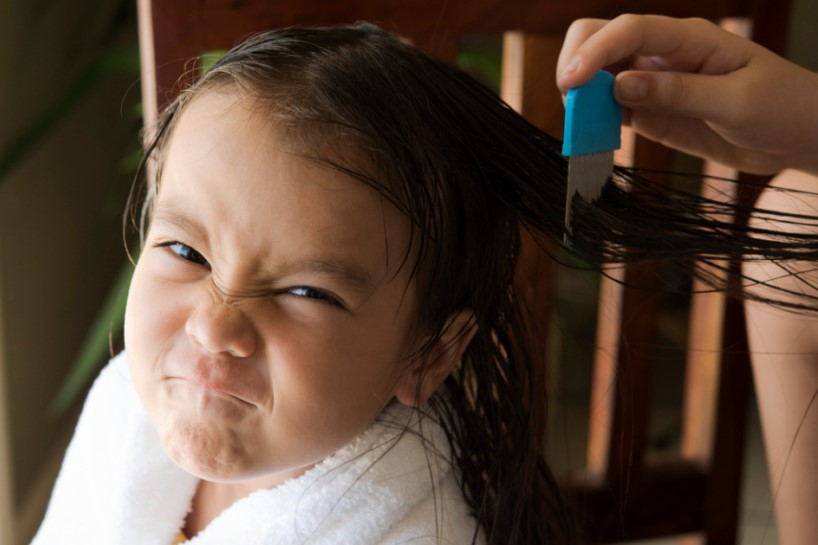
Head lice and ticks: how to remove them
As small as they are insidious, they appear especially in hot weather: we are talking about lice and ticks, annoying and sometimes even dangerous parasites for humans. In particular, the tick bite should not be underestimated: although it is almost completely painless, it can lead to even serious consequences for our health
What are head lice
Head lice are small parasites that feed on human blood and cause annoying itching.
They mainly occur on the scalp, hiding in the hair.
No matter how long or clean the hair is, they simply find a hospitable environment and deposit their eggs there.
What lice cause
Head lice cause itching and social discomfort for humans.
CHILD HEALTH: LEARN MORE ABOUT MEDICHILD BY VISITING THE BOOTH AT EMERGENCY EXPO
How do you get head lice
Head lice refers to an infestation of lice on the head or other areas of the body.
It is not a disease, but just an infestation that manifests itself very much in the summer months, as lice reproduce quickly and migrate from one human being to another with great ease, but the great reservoir remains, at present, the school communities, especially kindergartens and primary schools because of the great propensity of children to physical contact.
How to get rid of head lice
Pediculosis capitis is never quick and easy to solve because the big insidiousness remains the eggs (nits).
In the case of an established head lice infestation, one can use
- products in the form of shampoos, mousses, gels and sprays based on Malathion, which cause respiratory paralysis of the parasite and also have a certain pediculocidal activity on the eggs;
- products extracted from pyrethrum, such as tetramethrin, permethrin and phenothrin, which are more active on lice, but little on nits;
- non-chemical plant-based products, such as dimethicone, which kill the parasite by suffocation.
Essential is the combination of these local therapies with the careful, daily mechanical removal of nits with a suitable comb that has very dense, non-deformable teeth.
This remains the crucial part that is often overlooked and that makes the whole pediculosis eradication procedure extremely long and annoying.
If the procedure is performed consistently, it takes an average of 10-15 days to eradicate lice and nits.
Ticks: how to recognise them and where they stick
Ticks are only a few millimetres long, are oval in shape and have eight small legs.
Males are dark, a shade tending towards brown, while females are more grey.
They have a mouthparts that allow them to sting the host on which they settle and suck its blood.
They settle particularly on animals such as birds, rodents, foxes and reptile badgers, but also on pets such as dogs and cats, so it is important to take care of your pets’ hygiene.
Sometimes, however, they settle on humans, affecting:
- head;
- legs;
- space between the toes.
If you are walking through meadows with tall grass, it is a good idea to always wear suitable shoes and long clothing to lower the risk of coming into contact with ticks.
What diseases ticks carry
Ticks also carry important diseases such as:
- Lyme disease, transmitted by the wood tick and found mainly in mountainous, wooded areas;
- meningoencephalitis;
- infectious fevers.
Mediterranean button fever, on the other hand, is transmitted by the dog tick and is common in very hot and dry areas, especially in the south of our country.
The real problem is that being completely painless, the tick bite is often not recognised and the diagnosis is made late, bringing with it quite a few unpleasant consequences for our health.
This is because while the tick is biting, it emits a slightly anaesthetic substance that does not make the bite felt.
How to remove a tick
In the event of a tick bite, it is a good idea to remove the parasite from your skin as soon as possible, without crushing it, but using tweezers, grasping it gently to avoid breaking it.
Once grasped, it may be useful to rotate the tick to extract it from the skin so that no parts of the animal remain inside our skin.
It should not be removed by hand or with the help of disinfectants.
Only after removing it should the skin be disinfected with hydrogen peroxide and a doctor consulted.
It may be useful to keep the removed parasite in a closed jar and take it to the nearest ATS office for safety.
It will be necessary to monitor the bite for a month or so and check for possible changes in the skin in the area, manifesting as swelling, irritation or, in more important cases, the so-called ‘centrifugal erythema’ and the possible appearance of fever. In the latter case, systemic antibiotic therapy should be evaluated by your doctor.
Generally, however, the bite is not felt and after a few hours or days during which the small animal sucks blood, it detaches itself from the host without serious consequences.
Read Also:
Emergency Live Even More…Live: Download The New Free App Of Your Newspaper For IOS And Android
What To Do In Case Of A Snakebite? Tips Of Prevention And Treatment
Insect Bites And Animal Bites: Treating And Recognising Signs And Symptoms In The Patient
How To Protect Yourself From The Bite Of The Violin Spider (Or Brown Recluse)?
What Is Lyme Disease And What Are Its Symptoms?
Lyme Disease: Watch Out For Tick Bites


